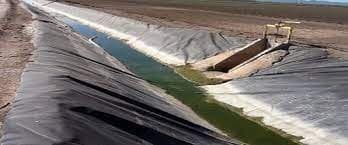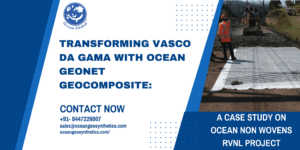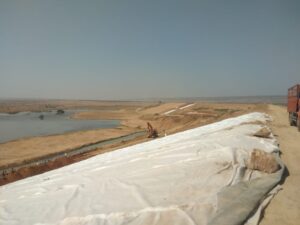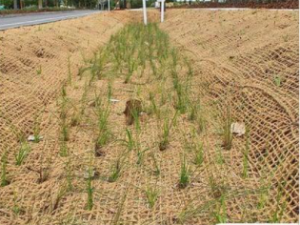Geosynthetics for Canal Lining
Geosynthetics which are human-made products, find extensive use in a variety of sectors, including agriculture. Applications of geosynthetics to the field of agriculture, specifically irrigation and drainage, are manifold. Ocean Geosynthetics are manufactures of a complete line of environmentally friendly premium-quality geosynthetic products. In this article, we explore the use of geosynthetics for canal lining.
What are canals?
Canals are essentially human-made waterways or artificial channels for travel, irrigation, and shipping. In the context of agriculture, canals help with water conveyance for irrigation. Urbanization, industrialization, and increased agricultural production worldwide call for improved methods of water containment and transportation. Especially in areas where water does not in its natural state exist at the levels required for irrigation, canals are the go-to technique to transport water. In India, canal irrigation is a primary source of irrigation following wells and tube wells.
Canal Lining:
Unlined canals defeat the very purpose of building channels. It is essential to line the canals with an impermeable layer to resist water flow and reduce loss due to seepage. Historically canals were lined with either earthen lining or hard surface lining. Traditional canal lining is of compacted earth or soil cement lining. Whereas the hard surface lining is of brick, boulder, concrete, or even plastic. Although inexpensive, the traditional linings lose water due to seepage and are also susceptible to erosion and vegetative growth. The concrete linings are not just expensive but also prone to cracking and loss of water.
Geosynthetics for Canal Lining:
With technological advancement, many man made materials are replacing the age-old materials and methods. Geosynthetics is one such class that is now an irreplaceable solution in various engineering fields. As with various other sectors in the agricultural area also geosynthetics are not just an economically viable but performance-oriented and durable option. Alone or in conjunction with different layers, geosynthetics increase the efficiency of canal irrigation.
The various geosynthetics for canal lining include geotextiles, geomembranes, geogrids, and geonets. They perform the functions of filtration, drainage, and impermeability, depending on the application.
While geomembranes are impermeable sheets, geonets are made of HDPE and find use as drainage nets. Geotextiles, on the other hand, are an added protective layer to the geomembranes, making them puncture resistant. Geogrids serve to support the lining system where there is poor subgrade.
Of all the geosynthetics, the geomembranes for canal lining are the star performers in use since the 1950s. HDPE geomembranes are by far the chosen geosynthetic for canal linings. They perform exceptionally well and offer chemical, hydrocarbon, and abrasion resistance that make them so popular.
LLDPE geomembranes with greater flexibility than HDPE are ideal for projects with a differential settlement. EPDM, highly flexible and stable, conforms to the canal’s shape, easily making it suitable for old installations as well. PVC geomembranes, also flexible, are ideal for quick installation.
The high-density polyethylene geomembranes at Ocean Geosynthetics offer excellent mechanical strength, chemical stability, high impervious coefficient, long service life with aging resistance and puncture resistance, all at a low cost, and being environmentally friendly.
The world-renowned Ocean Geosynthetics is your go-to geomembranes manufacturer. We supply cost-efficient and robust geomembranes for use in various engineering sectors for more than two decades now. Contact us to plan your next project.




